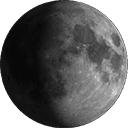Non-radial pulsation in be stars. Preparation of the Corot space mission
Autor: Gutierrez Soto, Juan
Fecha de Lectura: 15/12/2006
Dirección: Fabregat Llueca, Juan
The general objective of the present work is to contribute to the knowledge of the physics of Be Stars. In particular, we are interested in studying and characterizing their pulsational properties. A very suitable tool to reach this goal is the study and analysis of photometric time series with the maximum time baseline, density and photometric accuracy.
The space mission COROT scheduled to be launched in December 2006, will provide ultra high precision, relative stellar photometry for very long continuous observing runs. Up to ten stars will be observed in the seismology fields with a photometric accuracy of a few 10-4 and color information.
The observations of Be stars with COROT will provide photometric time series with unprecedented quality. Their analysis will allow us to qualitatively improve our knowledge and understanding of the pulsational characteristics of Be stars. In consequence, we have started a research project aimed at observing Be stars both in the seismology and exoplanet fields of COROT.
In this thesis we present the firs step of this project, which is the preparation and study of the sample of Be stars that will be observed by COROT. We have performed photometric analysis of all Be stars located in the seismology fields (Chapt. 2). Special emphasis has been given to two stars (NW Ser and V1446 Aql) in wich we have detected multiperiodic variability and which we have modeled in terms of stellar pulsations (Chap. 3). We have also performed an in-dept spectroscopic study of NW Ser and modeled the non-radial pulsations taking into account the rotational effects (Chap. 4) A technique to search for faint Be stars based on CCD photometry has been developed and is presented in Chap. 5. In the same chapter, we present a list of faint Be stars located in the exoplanet fields of COROT detected with this technique and which we propose as targets for COROT. In addition, we have proved that our period-analysis techniques are suitable to detect miltiperiod.






